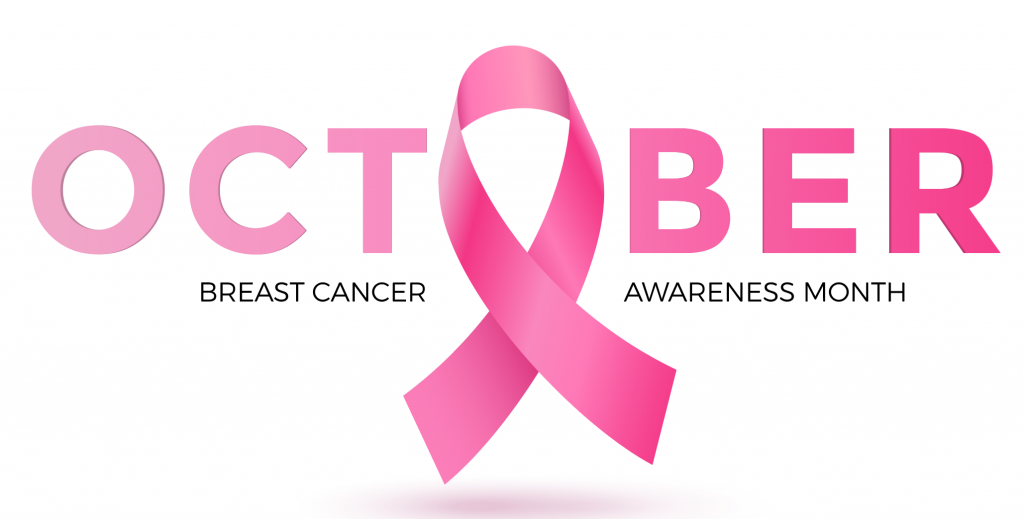Pink is everywhere in October for breast cancer awareness month. Here at Faviana, we are all about empowering women which is why we want to raise awareness and increase education on breast cancer to encourage more women to be aware at a younger age. Breast cancer is the most common cancer in women in the United States with about 1 in 8 women getting breast cancer in their lifetime. Usually, it is associated with older women, however, young women are at risk to the disease as well. Many young women do not think about having cancer in their 20s and 30s, and don’t take preventative measures early. According to the Centers of Disease Control and Prevention, 11% of new breast cancer cases in the United States happen in women under the age of 44. Breast cancer in young women is more likely to be hereditary, more likely to be found at a later stage and is often more aggressive and difficult to treat. In honor of breast cancer awareness month, we want to make young women aware of the helpful resources for early detection practices.

Bright Pink
Bright Pink is an organization that focuses on young women and breast cancer. Founder Lindsay Avner started the organization because of her personal experience with breast cancer at a young age. Ten years ago, Avner was the youngest women in the country at the time to undergo a risk-reducing double mastectomy at the age of 23. She had a family history of breast cancer and at age 22 genetic testing revealed that she carried a mutation on the BRAC1 gene, which indicated that she had around an 87% chance of developing breast cancer and 54% chance of developing ovarian cancer. During this time, she saw the lack of resources for women in her specific situation, those who did not have cancer but wanted to take proactive measures. From this experience, she felt a responsibility to create a welcoming community that provided the education and support she was seeking during her experience. Avner started Bright Pink in 2007 with the mission of creating a movement of young women who are proactive advocates for their health.
Bright Pink has different resources that are directed at young women and early detection practices. These resources range from assessing your risk to community support groups. Let’s take a look at some of these valuable resources.

Assess Your Risk
Bright Pink provides a link for an “Assess Your Risk” quiz that allows you to learn about your personal cancer risk and get simple steps to take charge of your health. It asks questions related to you, your health and your family to assess your risk. This can be a valuable tool for early detection practices for young women because breast cancer is more likely to be hereditary at a young age.
Explore Your Genetics
Another resource Bright Pink offers is about genetic information and why it is important to consider. Genes may contribute to the risk level of certain diseases and is important to look at when assessing risk. Bright Pink provides information on ways to get tested and talking to a genetic specialist.
Collecting Family History
Another important factor for assessing risk is family history. Family history should be evaluated because up to 25% of breast and ovarian cancers are familial or hereditary. Bright Pink provides an informative list on what to look out for and how to understand hereditary cancer better.

“I believe that now, more than ever, we have the opportunity to shift a national conversation from one centered around awareness to one focused on life-saving action.” – Founder Lindsay Avner
Reduce Your Risk
There are small changes you can make in your daily routine that can help reduce your risk. Regular exercise, limiting alcohol consumption, eating well, stop smoking, having children and breastfeeding and taking birth control can all help lower your risk. However, these healthy practices do not prevent cancer, so be sure to assess your risk and incorporate screenings as well.
Screening & Self Awareness
You know your body best, so self awareness is a good practice for early detection. There are different symptoms to be on the lookout for and should be looked at if found. Screenings, such as mammograms and MRIs, are also important in detecting breast cancer. Talk to your healthcare provider to determine which option is best for you.
Partner with Your Healthcare Provider
Your healthcare provider is critical in developing a health management plan and it is important to have annual exams done. An annual exam usually consists of a standard physical, family & personal health history, clinical breast exam and a mammogram. Remember no two exams are the same so yours may vary depending on your assessed risk.
Connect with Others Managing their Risk
Bright Pink provides unique resources that inform and empower women when navigating their lives with risk. Bright Pink’s community support is an online support community that gives access to information, resources and personal connections to help you during your individual journey. There is also One on One support, which is peer support programs through a partnership with Imerman Angels. Imerman Angels is the leading organization in one-on-one support for cancer survivors, fighters, caregivers, and those at elevated risk. Connecting with others is important to have support from others who have shared similar experiences during your journey.

Breast cancer affects many women every year, both young and old. It is important not to wait to start early detection practices and assess your risk just because you are younger. The valuable resources from Bright Pink provide information to young women to better understand the risk of the disease, so make sure to raise awareness and educate yourself on breast cancer!
XO,
Keegan


